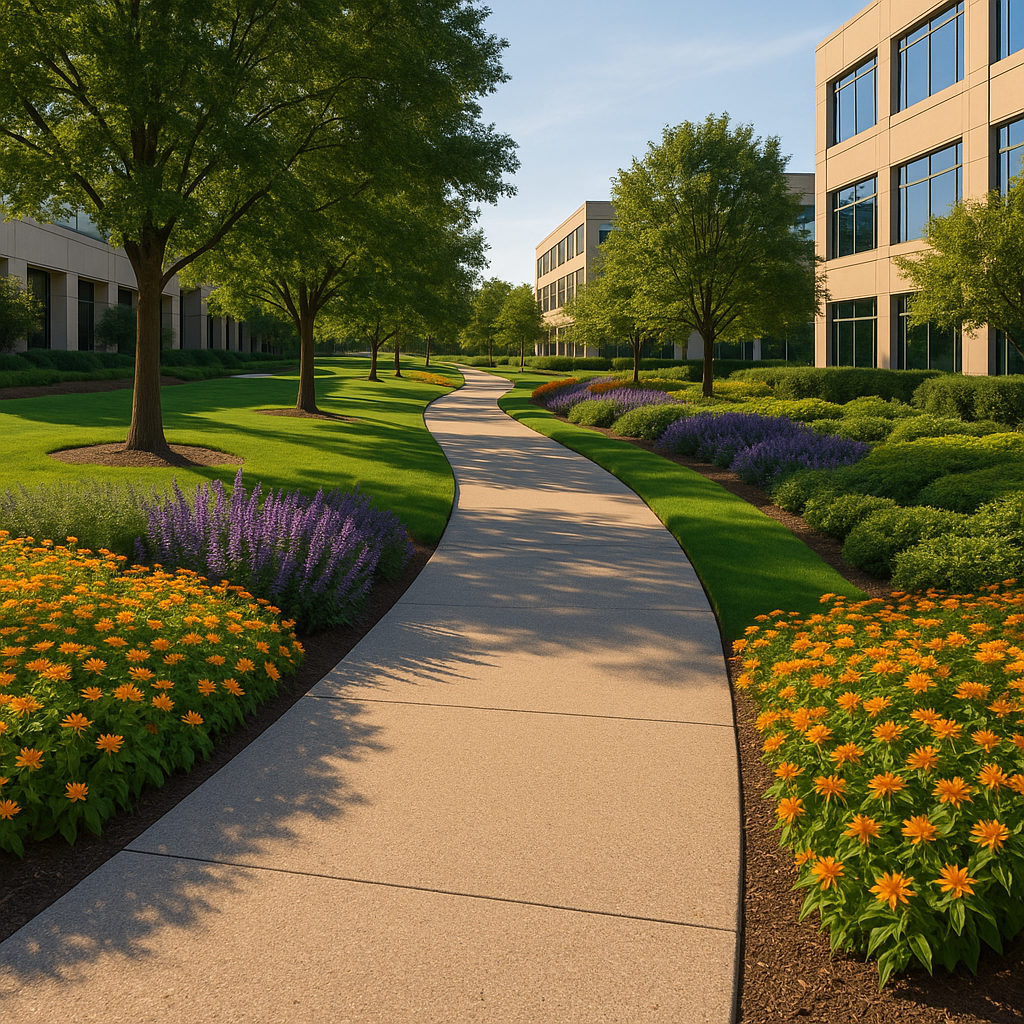The presence of a beautiful landscape not only enhances the visual appeal of a property but also promotes physical wellness and mental health through daily movement. Walkways, in particular, serve as crucial elements in outdoor spaces, inviting employees, visitors, and residents to embrace regular physical activity naturally and enjoyably. Thoughtfully designed landscape walkways can significantly influence daily routines, creating environments that motivate people to move, explore, and connect with nature.
This article explores how effective walkway design within a beautiful landscape can inspire consistent daily movement, elevate user experience, and integrate sustainability into everyday life.
The Impact of Walkways in Landscape Design
Encouraging Physical Activity
Regular walking is one of the simplest ways to maintain health, reduce stress, and enhance productivity. Well-designed walkways encourage spontaneous strolls, lunchtime walks, and outdoor meetings.
Connecting People and Spaces
Landscape walkways effectively bridge different areas of a property, guiding visitors effortlessly from gardens to buildings, seating areas, or recreational zones. Clear, inviting paths make navigation intuitive and enjoyable.
Enhancing Visual Appeal
Beautifully landscaped walkways serve as aesthetic focal points, accentuating the property’s architecture, plants, and natural elements. This strategic landscaping enhances the overall appeal and functionality of outdoor spaces.
Essential Features of Inspiring Landscape Walkways
Clear, Inviting Paths
Paths should be easily visible and accessible, encouraging users to explore. Curved or winding paths often create visual interest and a sense of discovery, enticing individuals to wander further.
Comfortable Width and Materials
Wide enough paths to comfortably accommodate pedestrian traffic, wheelchairs, or bicycles encourage use. Choosing durable, permeable materials like crushed gravel, brick pavers, or stamped concrete provides both function and style.
Shade and Seating Options
Strategically placed benches and shaded areas along walkways offer resting spots, enhancing comfort and prolonging enjoyment. Shaded paths with pergolas or tree canopies provide necessary relief from direct sunlight.
Integrating Landscape Design Architecture with Walkways
Detailed Landscape Drawing
The success of inspiring walkways begins with a comprehensive landscape drawing. A precise plan ensures pathways are integrated seamlessly with surrounding plantings, lighting, and outdoor furniture.
Harmonizing with Natural Elements
Incorporating native plants, shrubs, and trees alongside pathways helps blend walkways naturally into the surrounding environment, promoting ecological harmony.
Structured and Organic Balance
Combining formal design elements (straight paths, symmetrical plantings) with organic shapes and natural materials can achieve a visually appealing and balanced landscape.
Sustainable Walkway Practices
Eco-Friendly Materials
Choose materials that require minimal maintenance and have a low environmental impact. Recycled materials, permeable surfaces, and sustainably sourced wood are excellent choices.
Water-Efficient Landscaping
Integrate drought-tolerant plants and efficient irrigation systems alongside walkways. These practices not only reduce water usage but also maintain vibrant, lush surroundings with minimal resources.
Energy-Efficient Lighting
Illuminate walkways using LED or solar-powered lighting, promoting safety and usability after dark while minimizing energy consumption. Explore additional lighting strategies in Beautiful Landscape Lighting Ideas for Corporate Campuses.
Landscape Applications for Enhanced Walkways
Meditation and Reflection Zones
Create small alcoves or gardens along pathways designed specifically for contemplation or relaxation. These peaceful spots encourage mindfulness and provide tranquil breaks during daily routines.
Interactive Fitness Elements
Incorporate outdoor fitness stations, stretching bars, or informative signage promoting physical activity. These interactive features turn everyday walks into comprehensive fitness experiences.
Biodiversity and Wildlife Corridors
Design walkways that double as wildlife corridors, using native plantings to attract pollinators and birds. This enriches the landscape’s biodiversity, providing an engaging, educational experience for walkers.
Expert Landscape Contractor Collaboration
Professional Implementation
Working closely with an experienced landscape contractor ensures the walkway project adheres to best practices in design, sustainability, and construction.
Long-Term Maintenance Strategies
A professional maintenance plan keeps walkways safe, attractive, and functional year-round. Contractors offer essential insights into low-maintenance landscaping techniques and sustainable upkeep.
Cost-Effective Solutions
Contractors can advise on cost-effective material choices and strategies that maintain beauty and functionality without extensive investment. Learn more in Beautiful Landscape Tips for Low-Maintenance Office Grounds.
Promoting Wellness through Walkway Design
Outdoor spaces designed for walking foster a culture of wellness, significantly enhancing physical and mental health. Carefully planned walkways within a beautiful landscape inspire users to take daily breaks outdoors, contributing positively to overall well-being. Explore more about wellness-promoting spaces in Beautiful Landscape Zones That Encourage Outdoor Meetings.
Final Thoughts
A well-designed walkway does more than connect different areas—it inspires daily movement, supports wellness, and contributes significantly to the overall aesthetic and functional quality of a landscape. By incorporating sustainable practices, expert landscape contractors, and thoughtful landscape design architecture, beautiful walkways become central features that enrich the daily lives of those who experience them.

